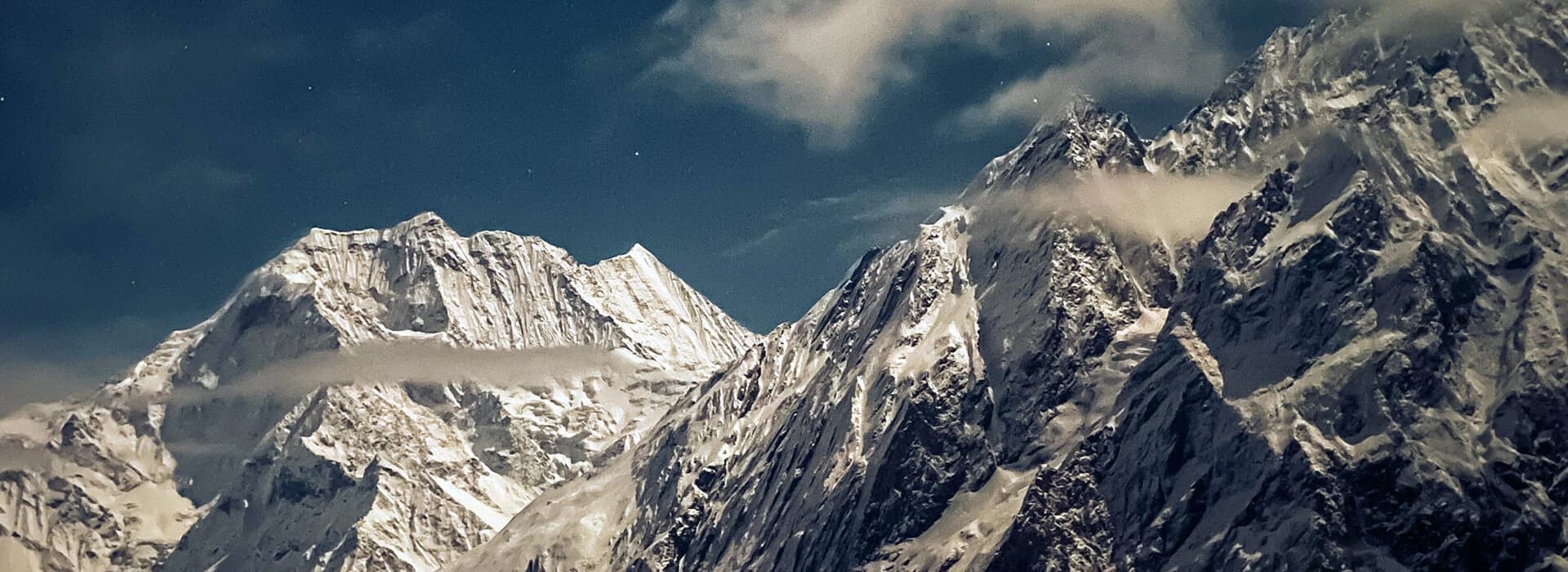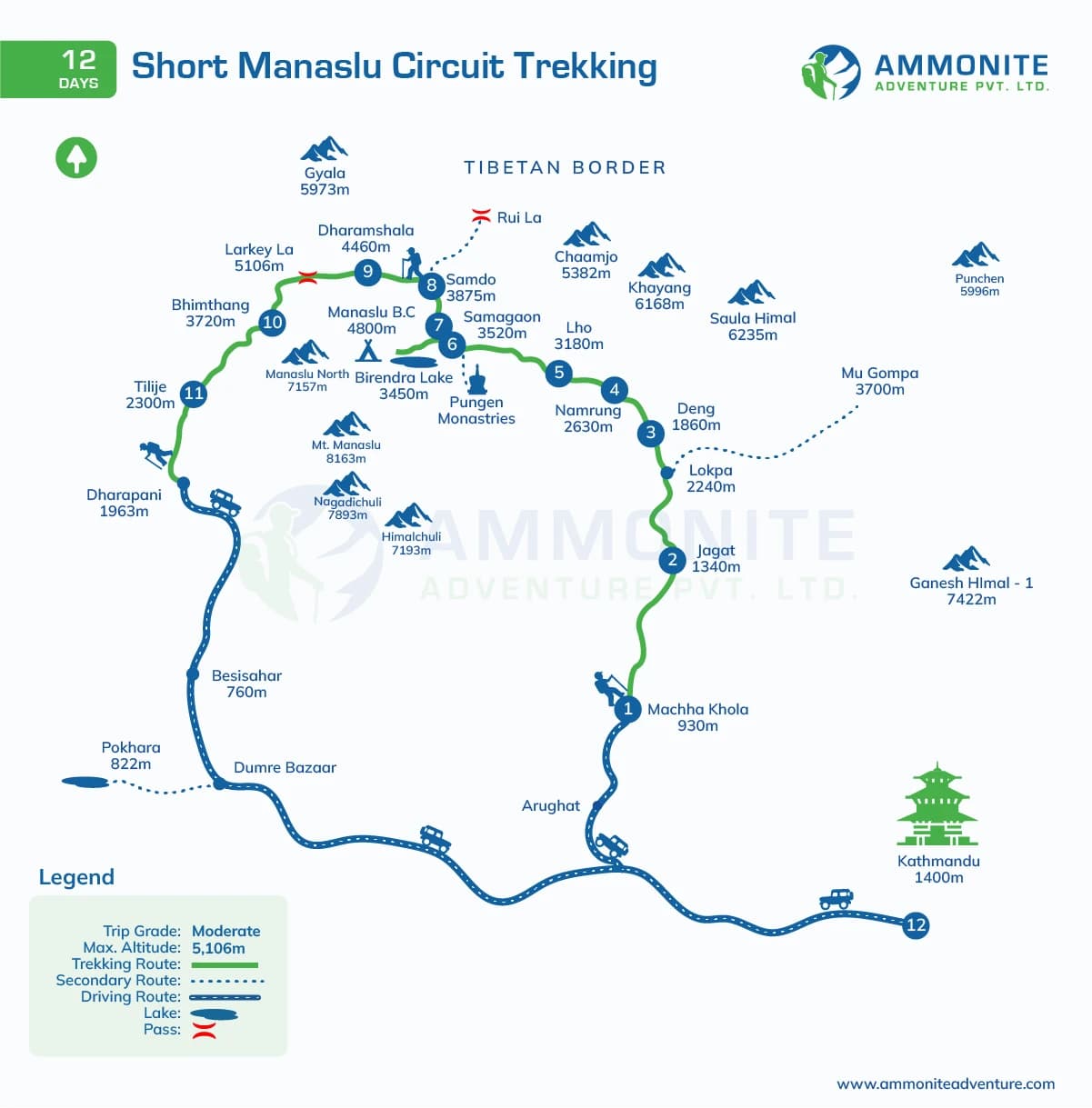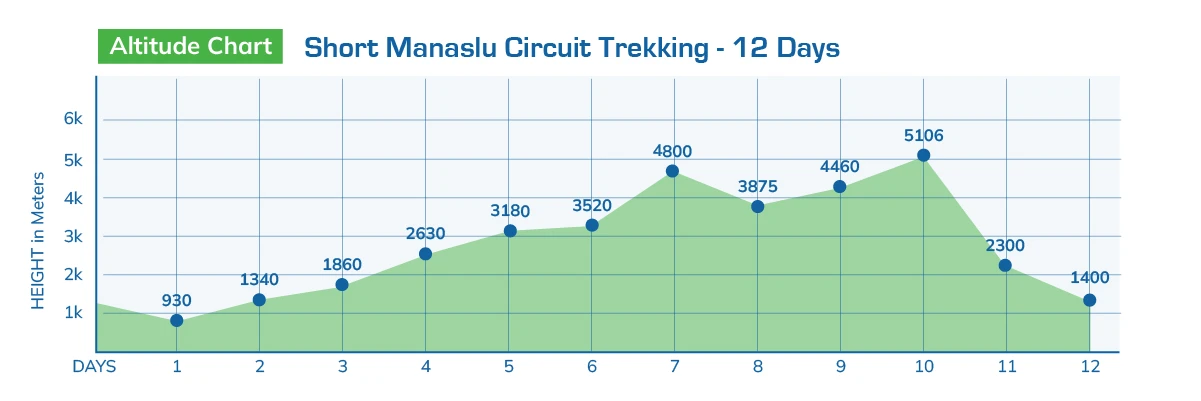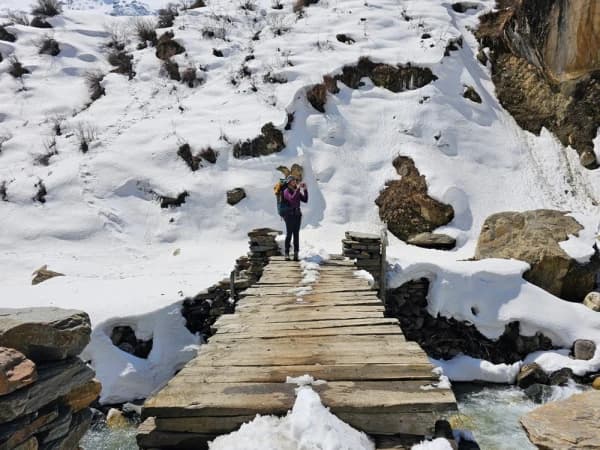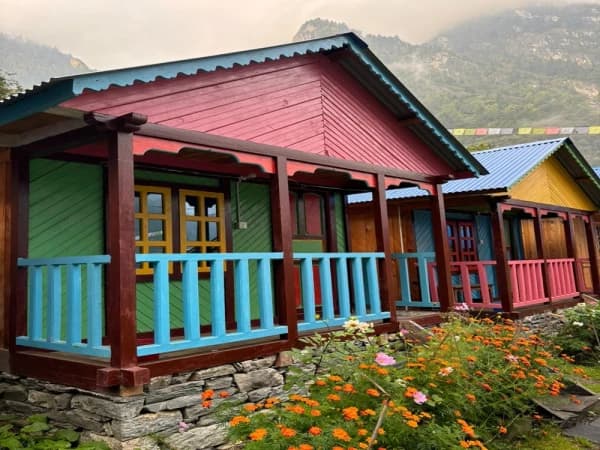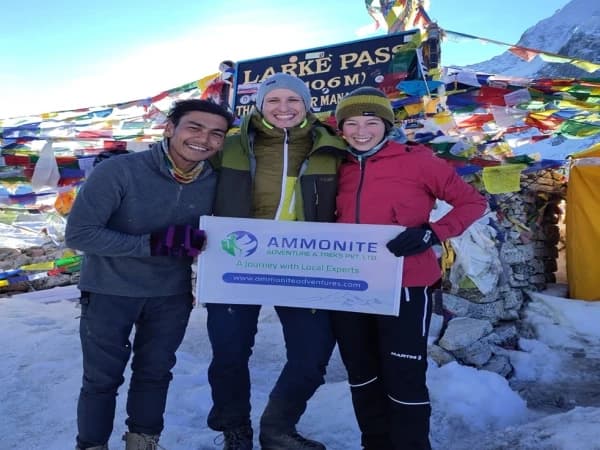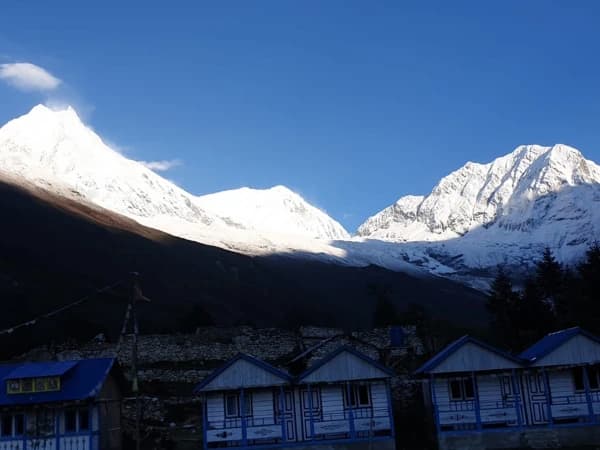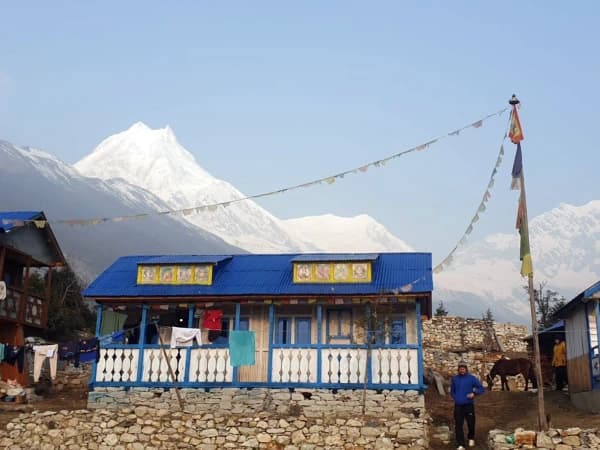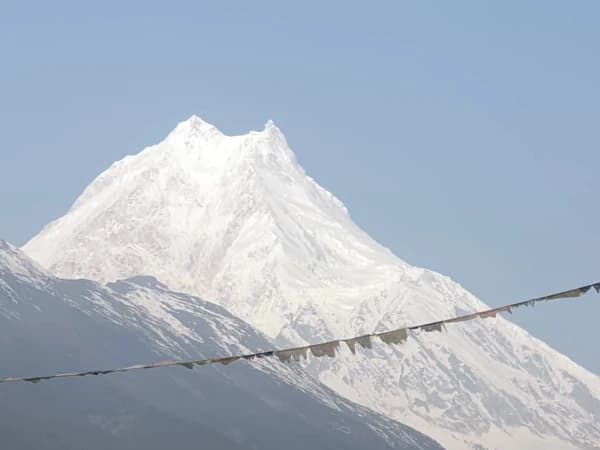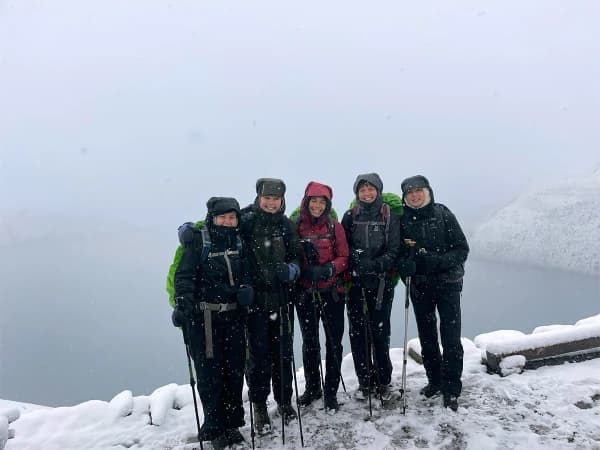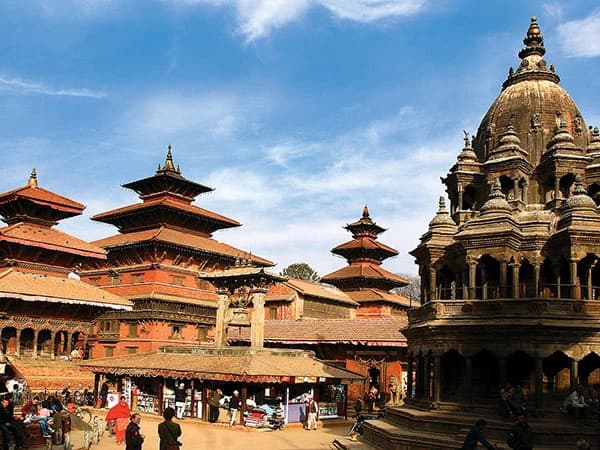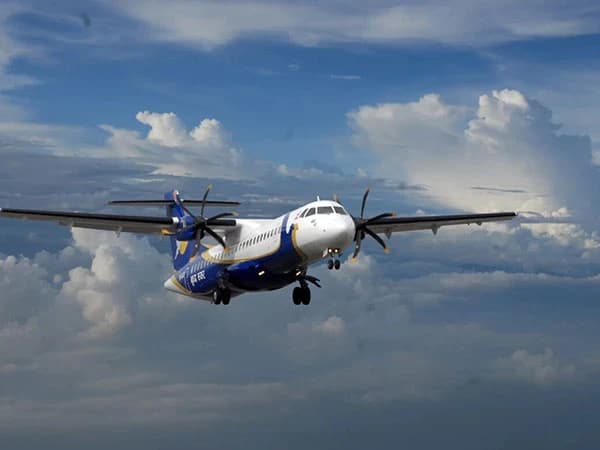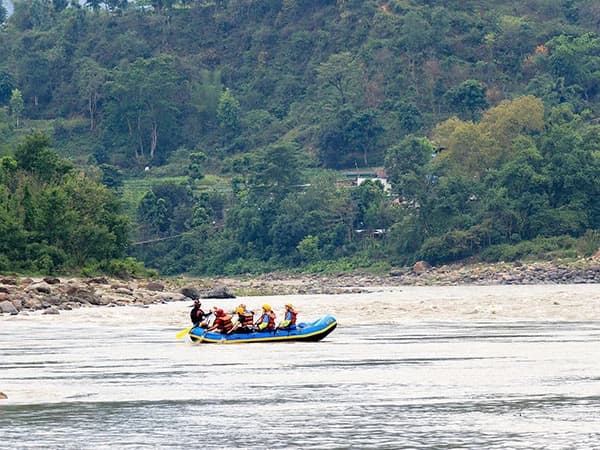When arriving in Kathmandu, a friend and I were roaming
Manaslu Circuit Trekking - 12 Days Trip Overview
The 12-Day Manaslu Circuit Trek takes you through the adventure of Himalayan beauty, including the majestic peaks like Mt. Manaslu (8,163 m / 26,781 ft) and Ganesh Himal (7,422 m / 24,350 ft), following the route through steep Budi Gandaki Valley, secluded villages, pristine rhododendron, pine forest, and high-altitude settlements such as Sama Gaun.
Along the route, you can notice rich Tibetan Buddhist culture, prayer flags, mani walls, monasteries, and villages like Namrung and Samdo. Larkya La Pass (5,160 m / 16,929 ft) tests your endurance at the same time offers stunning views of Mt. Manaslu (8,163 m), Ganesh Himal, Himlung Himal and Annapurna II.
Along the route, you can encounter centuries-old monasteries, cultural landmarks like mani walls and chortens, multiethnic communities (Gurung, Sherpa, Tibetan, Brahmin, Chhetri, and Dalit), and scenic spots such as Birendra Lake and the Manaslu Base Camp area.
The trek remains peaceful and less crowded, taking you through the restricted Manaslu Conservation Area with cosy teahouse accommodations, including acclimatisation days and is ideal for small groups seeking a demanding and rewarding experience. Guided by experienced local leaders, the trek offers both natural grandeur and cultural immersion.
This trek is designed for trekkers who wish to complete a less commercialized trek compared to the classic Everest Base Camp or Annapurna Circuit.
Facts:
- Duration: 12 Days
- Distance: 177 km
- Max Altitude: 5,106 meters (16,752 feet) (Larkya La Pass)
- Difficulty Level: Moderate to Strenuous (long walking days, high altitude)
- Starting Point: Arughat Bazaar / Soti Khola
- Ending Point: Arughat Bazaar / Soti Khola
- Best Time to Trek: September – November, March – May
- Trek Type: Round Trek / Restricted Area Trek
- Accommodation: Teahouses / Guesthouses
- Permits Required: Manaslu Restricted Area Permit, Annapurna Conservation Area Permit (ACAP), TIMS Card
Key Attractions and Experiences on Manaslu Circuit Trekking Trail
- Mount Manaslu (8163 m) is the 8th-highest peak in the world.
- Larkya La Pass (5106 m) is a tough but beautiful mountain pass.
- Journey through two of Nepal's most iconic regions.
- Visit the historic Nubri Monastery and Pungyen Monastery.
- Visit monasteries, chortens, mani walls, and the tranquil Birendra Lake.
- Experience multiethnic villages inhabited by Brahmins, Chhetris, Dalits, Gurung, Sherpa, and Tibetans.
- Supported by experienced local guides and customized Manaslu trekking itineraries.
- Hike near Manaslu Base Camp, located at the world’s 8th-highest peak.
- A peaceful and less crowded trek in the Manasiri Himal range.
- Panoramic views of some of the highest Himalayan peaks, including Manaslu, Annapurna II, and Lamjung Himal.
- Discover the ancient monasteries, which are more than 200 years old.
- Trek to the Tibetan border from Samdo Village.
Short itinerary
The 12-day Manaslu Circuit Trek takes you through remote Himalayan landscapes, traditional Tibetan-influenced villages, and some of Nepal’s most breathtaking high-altitude terrain. You begin your journey in Soti Khola and finish the circuit in Besisahar.
Day 1: Drive from Kathmandu to Machha Khola (930 m / 3,051 ft). Transport time: 9 hrs. Accommodation: Tea House. Distance: 160 km / 99 miles.
Day 2: Half-day drive and half-day trek from Machha Khola (930m) to Jagat (1,340m) – 6–7 hours.
Day 3: Trek from Jagat (1,340 m) to Deng (1,860 m) – 6–7 hours.
Day 4: Trek from Deng (1,860 m) to Namrung (2,630 m) – 6–7 hours.
Day 5: Trek from Namrung (2,630 m) to Lho (3,180 m) – 5–6 hours.
Day 6: Trek from Lho (3,180 m) to Sama Gaun (3,520 m) – 4–5 hours.
Day 7: Acclimatisation and rest day in Sama Gaun (3,520 m) – Explore the village or visit nearby attractions.
Day 8: Trek from Sama Gaun (3,520 m) to Samdo (3,875 m), with an optional hike to the Tibetan border – 4–5 hours.
Day 9: Trek from Samdo (3,875 m) to Dharamsala/Larkya Phedi (4,460 m) – 4–5 hours.
Day 10: Cross Larkya La Pass (5,106 m) and trek to Bhimtang (3,590 m) – 7–8 hours.
Day 11: Trek from Bhimtang (3,590 m) to Tilche (2,300 m) – 5–6 hours.
Day 12: Trek from Tilche (2,300 m) to Dharapani (1,860 m), then drive via Besisahar to Kathmandu (1,400 m) or Pokhara – 8–9 hours.
Manaslu Circuit Trek Cost Breakdown
The cost of trekking the Manaslu Circuit varies depending on the level of service, group size, and inclusions like guides, porters, accommodation, and meals. Typically, the price covers permits, transportation, and professional support, ensuring a safe and well-organised trek. Budget options are available, but investing in experienced guides and proper logistics is highly recommended for a comfortable, hassle-free journey through this remote region.
Cost breakdown:
| Expense Category | Estimated Cost (USD) | Notes / Details |
| Permits | $135–$160 | Manaslu Restricted Area Permit, TIMS Card, ACAP Permit |
| Guide & Porter | $25–$30 per day | Guide and porter fees vary by agency |
| Food | $35–$45 per meal | Typical teahouse meals: dal bhat, noodles, soup |
| Accommodation | $10–$20 per night | Basic teahouse rooms along the trail |
| Transportation | $20–$30 (Public bus) $250-$400 (Private jeep) |
Jeep or bus from Kathmandu to the trailhead and return |
| Optional Expenses | Varies | Tips, personal gear, hot showers, snacks, and internet |
Ammonite Adventure Manaslu package costs start from $900 for an 8-person group size and $1000 for 2 group size.
Best Season for this Circuit Trek
Thebest months to trek the Manaslu Circuit are spring (March–May) and autumn (September–November). During these periods, the weather is stable, daytime temperatures are mild, and the skies stay clear, offering excellent visibility of Mount Manaslu and the surrounding peaks. Trails remain dry and safe, making the trek more enjoyable. You can also experience blooming rhododendrons in spring or cultural festivals in autumn.
Key Reasons:
Stable Weather: Clear skies with minimal rainfall, ideal for trekking and photography.
Mild Temperatures: Daytime temperatures range from 10–20°C (50–68°F) at lower altitudes and stay cooler but manageable at higher elevations.
Excellent Visibility: Mountains and landscapes remain crisp and clear, perfect for panoramic views.
Cultural & Natural Highlights: Spring brings colourful blooms, while autumn offers festivals and vibrant scenery.
How difficult is it to trek the Manaslu Circuit Trek?
The difficulty of the Manaslu Circuit Trek varies from day to day. The first and second days are easier, starting with drives from Kathmandu (1,400m / 4,593ft) to Machhakhola (930m / 3,051ft) and a half-day walk to Jagat (1,340 m / 4,396 ft).
As you move from Jagat to Deng (1,860 m / 6,102 ft) and then Namrung (2,630 m / 8,628 ft), the trails grow steeper and more rugged, requiring moderate effort as your body adjusts to higher altitudes.
From Lho (3,180 m / 10,433 ft) to Sama Gaun (3,520 m / 11,548 ft) and Samdo (3,875 m / 12,717 ft), trekking intensity increases, and the risk of mild altitude sickness begins to appear.
Rest and acclimatisation days in Sama Gaun help your body adjust, preparing you for the toughest challenge ahead: Larkya La Pass (5,160 m / 16,929 ft). Crossing the pass involves steep climbs and a long descent, making it the most strenuous day of the trek.
After the pass, the trek gradually becomes easier. Descending from Bhimthang (3,720 m / 12,205 ft) to Tilche (2,300 m / 7,546 ft) and finally to Dharapani (1,860 m / 6,102 ft) is less physically demanding, though downhill walking can be hard on the knees. Overall, the trek mixes moderate and challenging days, with proper pacing and acclimatisation being key.
About Trek Difficulty:
- Early days involve gentle climbs and short walks to adjust to the altitude.
- Moderate difficulty begins above 1,800 m / 5,905 ft, with steeper trails and forested paths.
- High-altitude trekking above 3,500 m / 11,483 ft increases the risk of altitude sickness
- Crossing Larkya La Pass (5,160 m / 16,929 ft) is the trek’s most challenging day.
- Descents after the pass are easier physically but may strain your knees during downhill walking.
Why Trek the Manaslu Circuit with Ammonite Adventure?
Ammonite Adventure provides you with an experienced local team who knows about mountains inside out. Your safety is our topmost priority, and our licensed guides help you navigate every pass, including challenging ones like Larkya La.
We offer flexible itineraries based on your needs and preferences, providing 24/7 support before, during and after your trek.
We combine local knowledge with global service standards trusted by trekkers worldwide. We provide transparent pricing with no hidden costs, along with responsible, eco-friendly, and community-focused travel that lets you enjoy your trekking while giving back to local communities.

